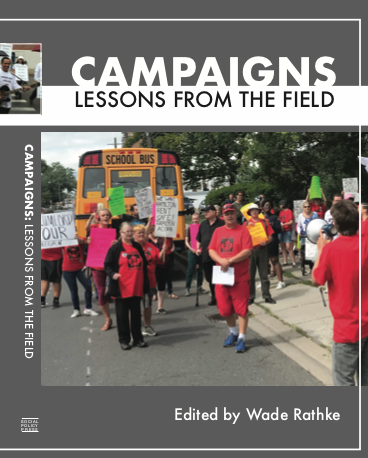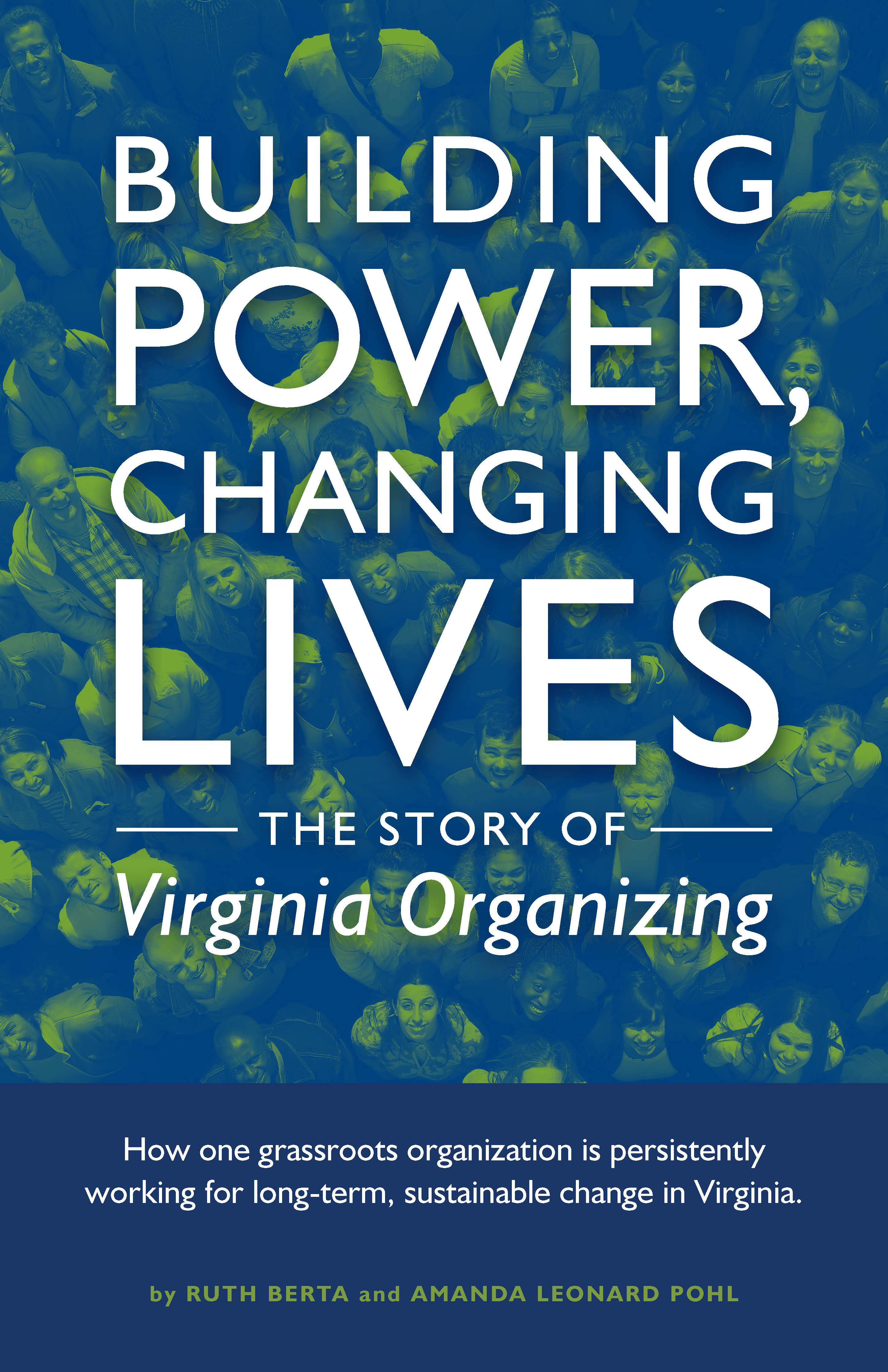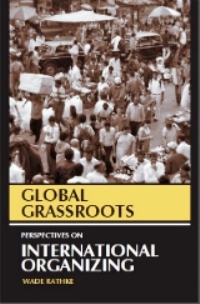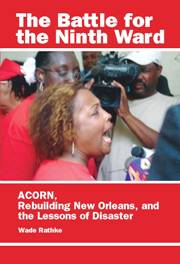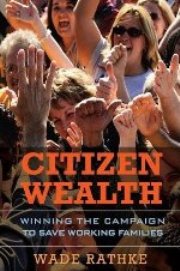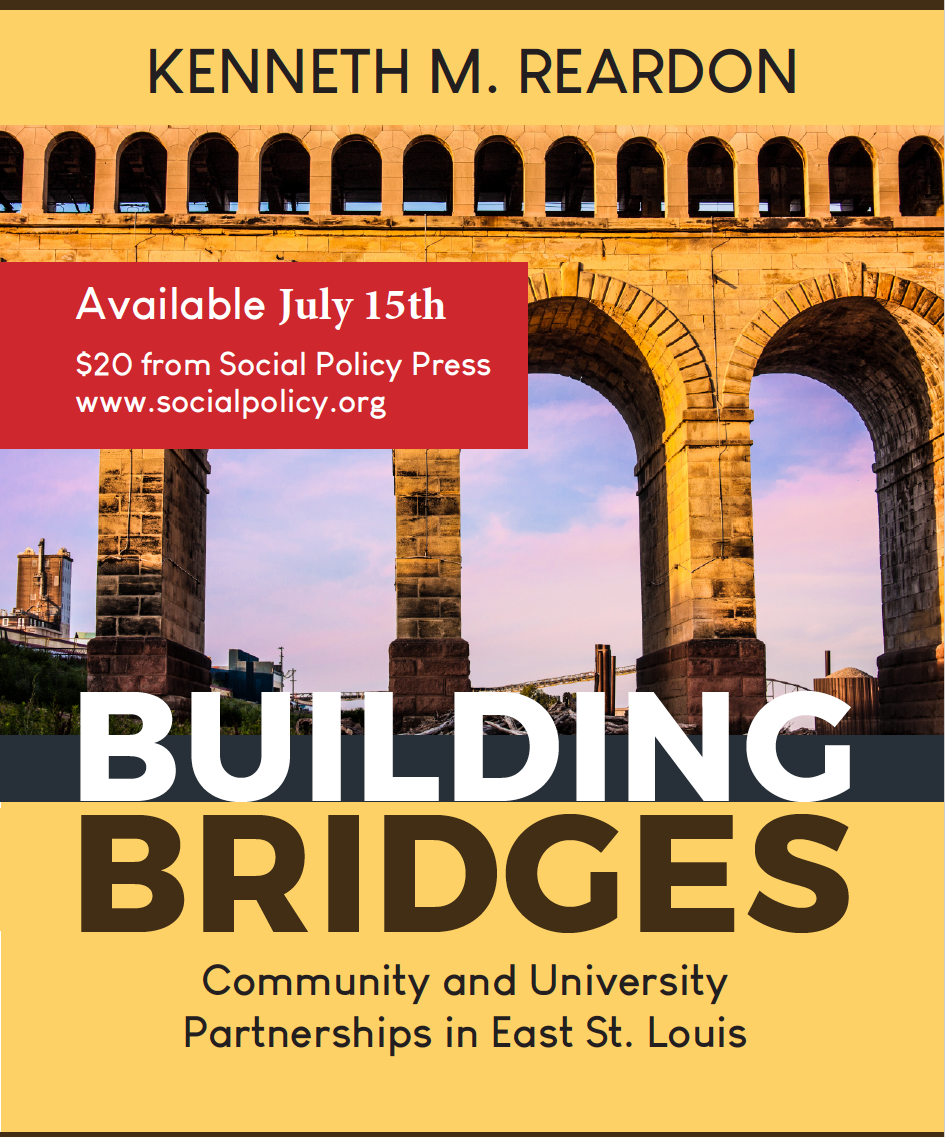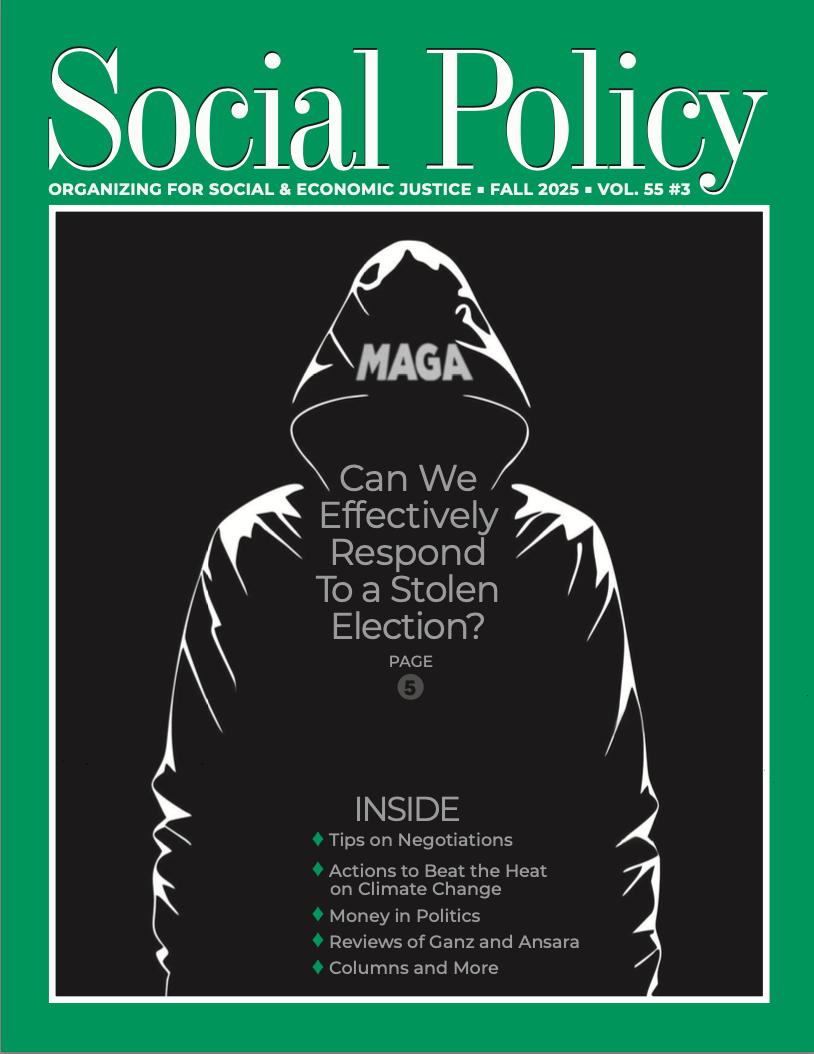Articles
Understanding Our Weakness … and Moving Forward
To understate the obvious: our side in the fight for social and economic justice and full democratic participation by all people isn’t doing well. I would like to use the California budget crisis to ask “Why? Why isn’t there a politically serious, no cuts, improve public services, progressive taxation proposal on the table?”
Easily asked; not as easily answered. The roots of the problem go deep.
The last time there was a serious effort to pass a “no-cuts” tax relief and reform proposal was 1975-1977 when the California Tax Reform Association (CTRA), a Sacramento-based and labor-supported public interest organization, and the Citizens Action League (CAL), a coalition of labor, minority, religious, senior, neighborhood and activist organizations, supported Sen. Nick Petris’ SB 154 – the Tax Justice Act.
It provided substantial property tax relief to 80% of homeowners and to renters (very highly priced homes didn’t do so well), and made up lost revenues by a combination of new upper-income tax brackets, mineral extraction taxes, and closure of corporate loopholes. It was vetoed by Governor Jerry Brown. Then-Assembly Speaker Leo McCarthy and the SB 154 coalition got a veto override vote; Senate leader David Roberti and CTRA-CAL couldn’t in the Senate. Proposition 13 became law the next year.
Jump To Now
Recently, a $26 billion deficit loomed because of the housing crisis-precipitated recession. At the same time, wealth concentration and income inequality were growing by leaps and bounds. An SB 154-type package could have made up the early deficit figure of $26 billion with no cuts in, and, indeed, improvements to, programs.
Conservative Republicans in California wanted to eliminate $26 billion of government services as part of their general destroy government strategy. They continue to play variations on Ronald Reagan’s “Get the government off your back” theme.
Democrats wanted to eliminate $13 billion of government services – the “crippled programs syndrome” approach that leads to inadequate public programs. They wanted to pay for the remaining $13 billion with a mix of regressive and mildly progressive taxes.
Yet, according to surveys of Californians, a majority supports Prop. 13 reform and progressive taxes, and is angry at the increasing concentration of wealth, income and power going on in the state and the country.
And, despite the supposed "anti-tax" climate, many local school and other bond and revenue measures are adopted by the voters, even when they require 2/3 approval.
There's a radical disconnect here? How should we understand it? What should we do about it? Why?
It is easy to blame spineless Democrats. But surveys and elections are two different things. Politicians understand that in the absence of mass-based “popular” organizations, money is required to buy mass media, that without mass media it’s difficult to win elections, and that you get money to buy mass media from people who have lots of it. Small donations aren’t sufficient. While politicians may or may not be spineless, they know what it takes to win elections.
Who were Democrats able to seduce (though it does take two to climb into the bed) in their crackpot realism compromise that cut the most vulnerable? Organized labor, particularly most public employee unions. Until labor is willing to disengage from its hand-in-glove relationship with Democratic politicians, and mount, or participate in, mass-based campaigns to push Democrats from the left, this drift to the right will continue.
Who might initiate the effort to pull labor away from its seductress? In 1976, some private sector unions that participated in the CTRA-CAL coalition wanted to preserve corporate loopholes in their particular sector of the economy. Others in the coalition said, “no deal. Either there’s across-the-board elimination of corporate loopholes, or we’re out.” There are no “Others” now to push labor in this way.
We have to look at a second source of our problem: the displacement of vigorous voluntary sector organizations of low-to-middle income and minority communities by the plague of community-based nonprofits, each of which may operate a program of merit but who collectively constitute a layer of co-opted leadership now dependent on a combination of government and foundation funding, making them competitors with one another for pieces of a shrinking pie.
In CAL days, religious congregations, unions, moderate and militant community groups, and various identity-based organizations came together in creative, sometimes tense, lowest significant common denominator coalitions that could — when they agreed — muster the clout to pass significant legislation and wrest significant concessions from corporate power.
We now face this irony: while individual community organizations are more powerful than they were 1974-78, and while some of them are part of state-wide and national “networks,” the sum is less than the parts. Each of the major networks in California — IAF, PICO, Gamaliel, ACCE (heir to ACORN), as well as important “independents” — can point to victories on specific campaigns. None of them seems to have any idea how, or they lack the will, to create majority coalitions that can slow, halt and reverse growth of the plutocracy. They list often-major victories while the experience of most Californians is that the quality of their lives continues to decline.
“The left,” broadly defined, pursues policies, strategies and tactics that may individually be of merit but whose cumulative impact has been to isolate it from the white working class, significant sectors of the very constituencies for whom it seeks and claims to speak, and middle-class “Anglo” moderates.
With no apparent place to go, the former drop out or support people and organizations ranging from George Wallace to The Tea Party. In the black community, the division between the people who go to church and the people who hang out on the street is far deeper than in the days of multi-class ghettos. Parallel divisions exist among Latinos, elderly, disabled, youth and other groups.
The political result in California is that centrist Democratic governors and legislative leaders made alliances with moderate Republicans to create legislative majorities, boxing progressives in and isolating them — despite majority public support for their economic policies.
Meanwhile, corporate power and individual wealth got off scot-free. It is easy to say they use “divide and conquer” strategies or have limitless money at their disposal. Both are true. But they are givens – the complaints of observers, not those who would make and change history.
What Is To Be Done: Two Steps Backward In Order To Move Forward
A new majority constituency position has to be defined by a group of leaders representing important labor, minority, senior, disabled, student, small business, professional and other significant groups in the state. They have to take this position deeply into the rank-and-file of their respective organizations. In many of these organizations this means getting beyond the usual activist core that speaks for others but fails to engage and involve them. Such a group, program and approach can stake out a moral claim that allows them to speak for the best of our religious and small “d” democratic traditions.
That position has to benefit 70% of Californians in its policy impact, avoiding, for example, the division over tuition increases in state institutions of higher education where middle-class households pay more so children of lower-middle class, working class and low-income households can receive student aid. This position must restore a steeply progressive income tax at high income levels, adopt and increase mineral extraction taxes, close corporate loopholes, and split the property tax between commercial/industrial and residential property and otherwise revise Proposition 13.
A campaign for this policy should be viewed as a three-to-five year effort so that local campaign committees can be built in most state assembly and senate districts, aimed at creating a veto-proof legislature in 2014 or 2016. It should target the legislature so that politicians who support it can be rewarded and opponents can be punished.
The local campaign committees should be non-partisan, but consciously seek to develop visible spokespersons who could be primary challengers against a negative legislator, principally in Democratic Party primaries, but also supporting the few moderate Republicans left, and perhaps in some circumstances supporting a third party candidate. The campaign should be kicked off by massive public rallies or mass meetings held throughout the state so a credible threat can be made to boycott corporations that threaten to move out of California because of the policy’s tax consequences for them.
Underneath the umbrella of the statewide campaign, a door-to-door canvass should be initiated that combines fund-raising, political pressure on legislators and education with a canvass-organizing effort to build new individual- membership, dues-paying, neighborhood and small town level clubs that have a life of their own. The clubs would use political participation, direct action and mutual aid to pursue a multi-issue agenda. They would define a program of public service improvements they want in their districts. The canvass-organizer who was their original organizer would shift to being their organizer whose salary and benefits are paid by their dues and such grass-roots fundraisers as raffles. Imagine a relatively small neighborhood of 10-20,000 with a club of 500 members who pay $100 a year in dues. The club has social, cultural, educational, mutual aid (time dollars, buying clubs, pooled baby-sitting, etc), direct action, lobbying and electoral activities as parts of its community-building activities.
CAL created a unit of experienced canvassers and added an organizing component to their job. While canvassing, they asked people if they would be interested in coming to a house meeting to discuss what they could do to help the campaign. They also assessed responses, and tried to discover who knew whom, and who respected whom on the block. When they thought they had a potential leader, they asked that person to convene the house meeting, and gave her the list of interested people in the immediate neighborhood. Canvassers raised "quota" (the fundraising goal) in three, instead of the usual five, days. In the remaining two days, they organized the house meetings, helping leaders create the agenda, and training them to conduct a small house meeting (a dozen-to-25 people). The level of participation that was generated staggered CAL's canvassers and leadership. The anger was waiting to be tapped. (The only similar energy I've seen since are the responses in the Latino community to immigration rights battles and the responses of public employees and their allies to Wisconsin's Governor Walker. And, unfortunately, the responses to The Tea Party.)
The feasibility of such an effort was demonstrated in the 1975-76 SB 154 campaign. A contemporary version has to take into account vast differences in today’s political climate. That, in turn, requires initial conversations among the group of leaders to whom I earlier referred.
Putting that group together is like stringing individually distinct beads on a necklace: it’s done one at a time as a result of one-to-one conversations initiated by one or two respected people who are willing to step up to see if this can be done. The conversations are framed in an “If…then” manner: “If a dozen-or-so key leaders in California are willing to meet to discuss how to make this campaign happen, would you be willing to be one of them?”
If no critical mass, no forward movement. And if no forward movement, we will continue to move backward.
Mike Miller directs the San Francisco-based ORGANIZE Training Center. He was a founder and chairperson of the Citizens Action League (CAL).
Adapted from a shorter article with the same title that appeared in Beyond Chron: The Voice of the Rest. San Francisco’s Alternative On-line quarterly.


